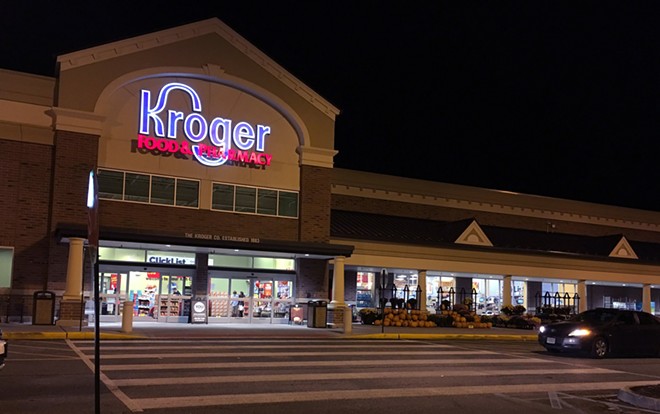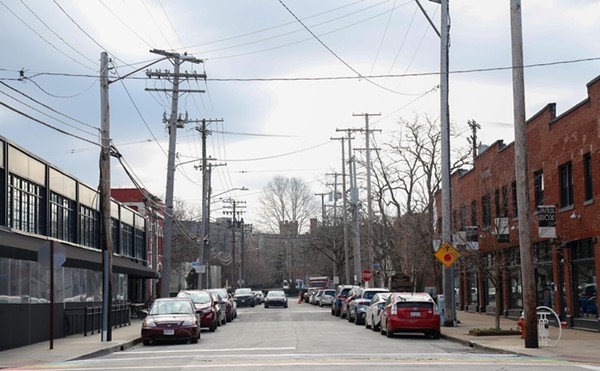Looking for someone to blame for increased costs in the grocery aisle? You might not need to look any further than three retail giants, the Federal Trade Commission said in a report last week.
The agency looked at supply chain disruptions caused by the coronavirus pandemic and determined that the three largest food retailers — Kroger, Walmart and Amazon — “accelerated and distorted the negative effects associated with supply chain disruption,” the agency said in a statement. It added that “consumers felt the negative effects of supply chain disruptions in the form of skyrocketing prices for groceries and product shortages for essentials, like toilet paper.”
Those prices, the report said, remain high well after most supply-chain disruptions have been resolved.
“As the pandemic illustrated, a major shock to the supply chain can have cascading effects on consumers, including the prices they pay for groceries,” said FTC Chair Lina M. Khan said in a statement. “The FTC’s report examining U.S. grocery supply chains finds that dominant firms used this moment to come out ahead at the expense of their competitors and the communities they serve.”
When the worst pandemic in a century hit in 2020, commerce suffered huge disruptions as policymakers around the world tried to slow the spread of the coronavirus by keeping people at home — and apart from each other. It stands to reason that the price of groceries went up as transportation became more difficult and some items much harder to get.
But the FTC report says the big-three retailers and suppliers made things worse in several ways:
- Large retailers used the threat of fines and fees to pressure upstream suppliers to allocate scarce items to them instead of smaller competitors.
- As retailers realized that having a small supplier base made them vulnerable, they worked to diversify. However, some of the biggest — such as Walmart and Kroger — are buying up some suppliers. That also could disadvantage smaller retailers that don’t have the resources to follow suit, the FTC report said.
- Manufacturers of scarce items reduced promotional spending, thus reducing smaller retailers’ ability to offer items at temporary discounts — a method they use to compete with the “everyday low price” strategy used by retailers big enough to negotiate low wholesale prices with manufacturers. The latter prices were less affected by pandemic-related disruptions than promotional spending was, the FTC report said.
Thankfully, the worst of the pandemic is past, but grocery prices remain stubbornly high, having jumped by 25% in four years. Retailers have contended that the higher prices merely reflect their greater costs, but the FTC found data that indicate otherwise.
Food and beverage retailers saw their revenue rise to 6% over total costs in 2021 — higher than the previous peak of 5.6% in 2015. Then in the first three quarters of 2023, they went even higher — to 7%, the report said.
“Notably, consumers are still facing the negative impact of the pandemic’s price hikes, as the Commission’s report finds that some in the grocery retail industry seem to have used rising costs as an opportunity to further raise prices to increase their profits, which remain elevated today,” it said.
A spokeswoman for Cincinnati-based Kroger didn’t immediately respond to a request for comment. With 2,800 stores and $148 billion in annual sales, it’s the nation’s largest grocery retailer.
Kroger is trying to increase its dominance by buying Boise, Idaho-based Albertsons for $25 billion. The FTC, however, is suing to block the deal, saying it “will eliminate fierce competition between Kroger and Albertsons, leading to higher prices for groceries and other essential household items for millions of Americans.”
The antitrust watchdog might have bolstered its case with last week’s report about supply disruptions caused by the pandemic.
“The pandemic made clear that supply chain bottlenecks, which can be created or exacerbated by limited competition, can leave markets exposed to major supply chain shocks—and that those shocks, in turn, can allow major firms to entrench their dominance and further harm competition,” the report said. “Achieving more diversified supply chains, including through promoting competition, can both limit the severity of supply chain shocks and, in turn, reduce the opportunity for that entrenchment.”
Originally published by the Ohio Capital Journal. Republished here with permission.











